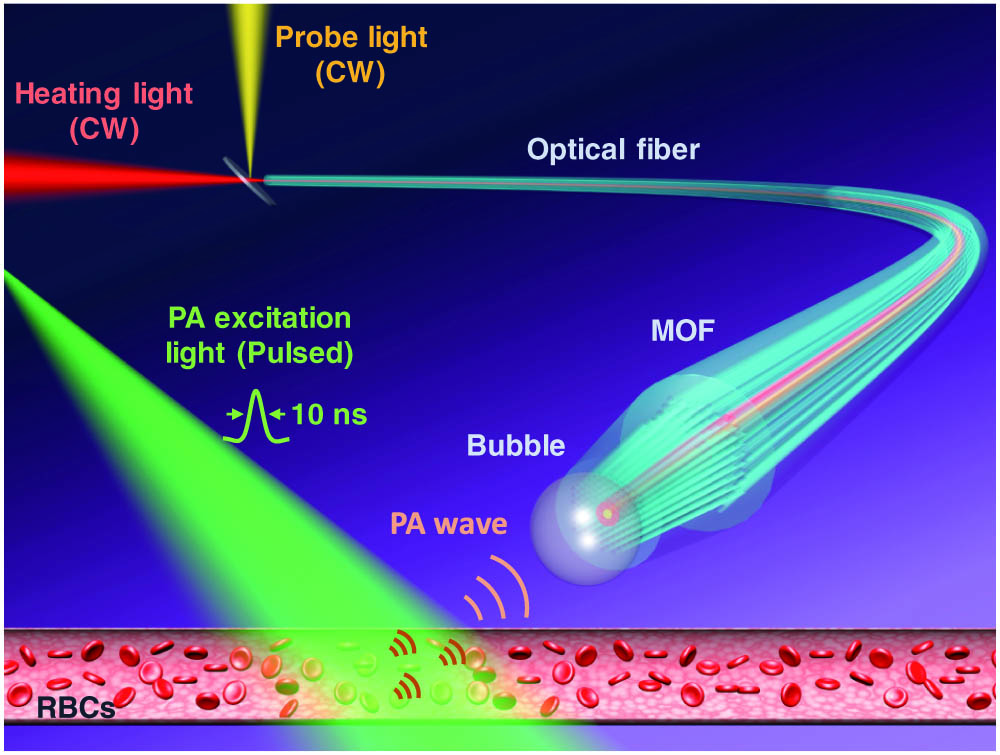Jun Ma, Yang He, Xue Bai, Li-Peng Sun, Kai Chen, Kyunghwan Oh, Bai-Ou Guan, "Flexible microbubble-based Fabry–Pérot cavity for sensitive ultrasound detection and wide-view photoacoustic imaging," Photonics Res. 8, 1558 (2020)
Search by keywords or author
- Photonics Research
- Vol. 8, Issue 10, 1558 (2020)

Fig. 1. Schematic of a surface microbubble photothermally generated at an MOF tip for photoacoustic imaging of RBCs in a blood vessel.

Fig. 2. (a) Microscope image of an MOF; inset: SEM image. (b), (c) SEM images of cross sections of the MOF at different locations as indicated by dashed lines 1 and 2 in (a); the inset in (c) shows the close-up image of the MOF core. (d) Microscope image of a photothermally generated microbubble on the MOF tip facet.
Fig. 3. (a) Temporal evolutions of the bubble diameter during growth and decay at different heating powers. (b) Heating powers for the SMF and the MOF to generate a 20 μm diameter bubble in the distilled water.
Fig. 4. (a) Measured and calculated reflection spectrum of a microbubble at different diameters. Inset: microscope images of the MOF-supported microbubbles. (b) Schematic of the light propagation inside the microbubble. (c) Profiles of the calculated electrical field distribution across the center of the MOF and the tapered SMF end facets; inset: the mode field distribution at the MOF end facet. (d) Transmission coefficient as functions of the bubble diameter for MOF and SMF.
Fig. 5. (a) Schematic of the experimental setup for ultrasound detection; DAQ, data acquisition unit; PC, personal computer. (b) Ultrasound response of a 10 μm diameter microbubble to the sinusoidal ultrasound wave with an amplitude of 100 Pa and a frequency of 700 kHz; RBW, resolution bandwidth. Inset: ultrasound response in the time domain. (c) SNR and NEP versus the ultrasound frequency. (d) Directivity of the microbubble for ultrasound waves at different frequencies.
Fig. 6. (a) Schematic of the photoacoustic imaging process by using a microbubble-based ultrasound sensor; inset: received temporal PA signals. (b) Photograph of the microbubble-based ultrasound sensor inserted into a needle for imaging the blood-filled tubes. (c) Acquired PA signals emitted from the blood-filled tubes; inset: frequency spectrum of the measured PA signal (PA 1

Set citation alerts for the article
Please enter your email address



